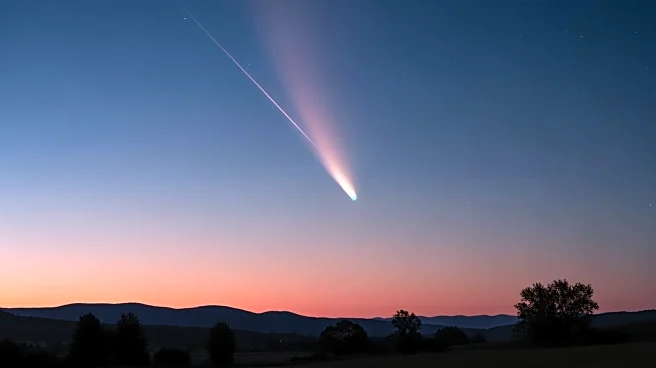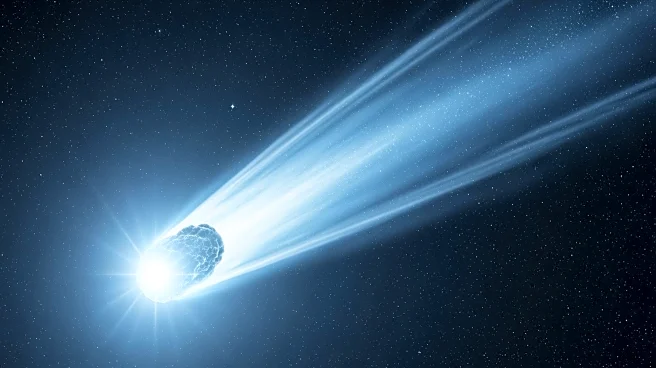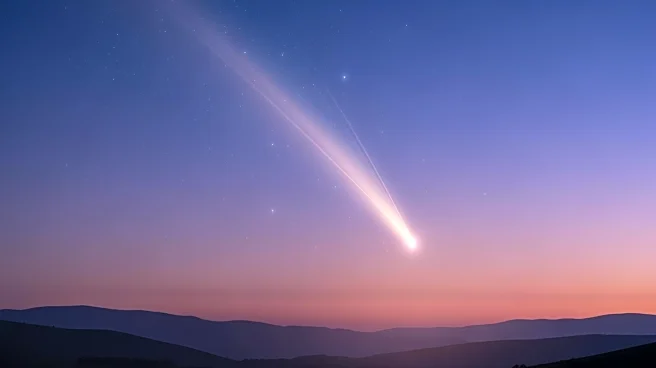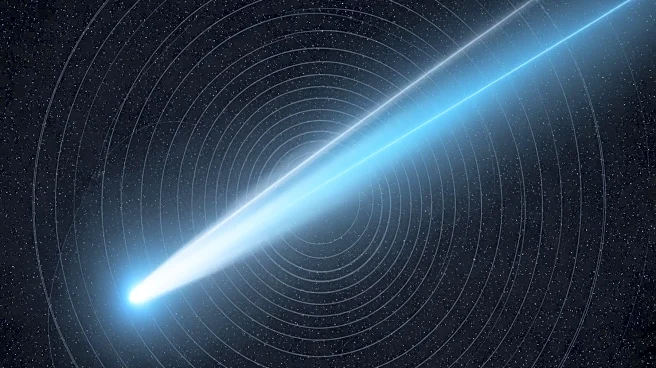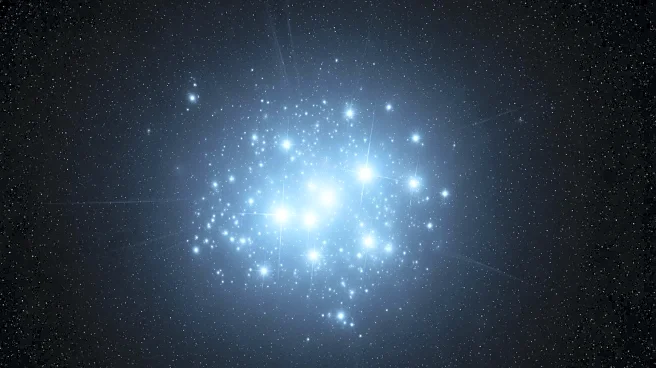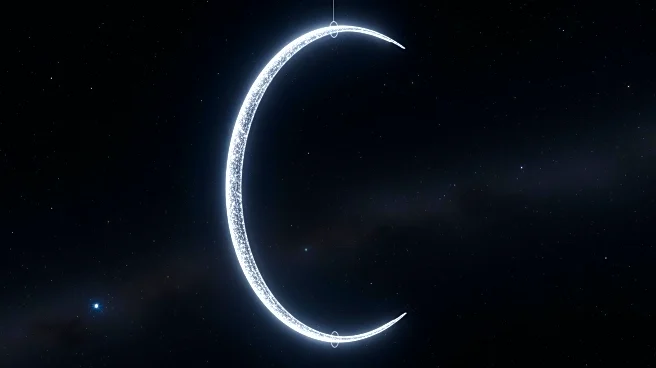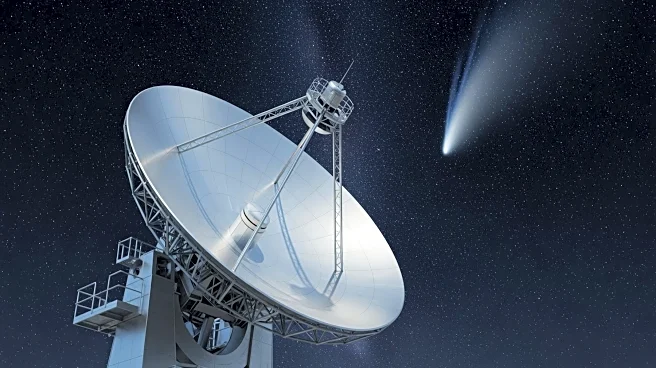What's Happening?
Comet 3I/ATLAS, an interstellar comet, is becoming visible in the pre-dawn sky as it emerges from behind the Sun's glare. Observers in mid-northern latitudes can spot the comet using telescopes capable
of detecting faint objects of 11th or 12th magnitude. The comet will be positioned low in the east-southeast just before dawn, with visibility improving as the Moon wanes. By November 16th, the comet will be 20 degrees above the horizon, making it more accessible for viewing. The comet's appearance coincides with the Leonid meteor shower, which peaks in the early hours of November 17th, providing a celestial spectacle for skywatchers.
Why It's Important?
The visibility of Comet 3I/ATLAS offers a unique opportunity for astronomers and enthusiasts to observe an interstellar object, which is a rare occurrence. This event highlights the advancements in telescope technology that allow for the detection of such faint celestial bodies. The comet's appearance alongside the Leonid meteor shower enhances public interest in astronomy and encourages educational engagement with the night sky. Observing interstellar comets can provide insights into the composition and behavior of objects from outside our solar system, contributing to scientific understanding of the universe.
What's Next?
As the comet becomes more visible, astronomers and hobbyists will likely attempt to capture images and data to study its properties. The waning Moon will improve viewing conditions, allowing for clearer observations. The comet's trajectory will be monitored to predict future visibility and potential interactions with other celestial bodies. The event may inspire further research into interstellar objects and their origins, potentially leading to new discoveries about the solar system's formation and the universe beyond.
Beyond the Headlines
The appearance of Comet 3I/ATLAS raises questions about the frequency and nature of interstellar visitors to our solar system. It prompts discussions on the technological capabilities required to detect and study such objects, emphasizing the importance of continued investment in astronomical research. The event also highlights the cultural and educational value of astronomy, as public interest in celestial phenomena can foster a greater appreciation for science and exploration.
